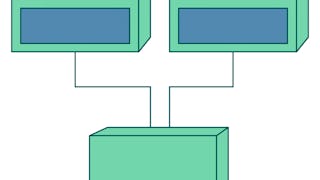Software Development Life Cycle (SDLC) is the process of developing software through planning, requirement analysis, design, implementation, testing, and maintenance. This course focuses on the requirement analysis phase of SDLC, and you will learn how to use UML models to capture the system requirements and to facilitate communication between client/users and developers. UML is a general purpose visual modeling language for systems. It can be used to highlight different aspects of the system that are of interest to different stakeholders. Data requirements are captured in the domain model, which describes the important concepts of the application domain as classes, associations between them and constraints on them. Functional requirements are captured in the use-case model to describe the interactions between the system and its environment (users, other systems).

Enjoy unlimited growth with a year of Coursera Plus for $199 (regularly $399). Save now.

Software Engineering: Modeling Software Systems using UML
This course is part of Software Engineering Specialization

Instructor: Kenneth W T Leung
32,109 already enrolled
Included with
(356 reviews)
Recommended experience
Skills you'll gain
- Software Engineering
- Software Systems
- System Requirements
- Model Evaluation
- Functional Requirement
- Object Oriented Design
- Diagram Design
- Requirements Analysis
- Data Modeling
- Project Planning
- Project Management
- Software Development
- Unified Modeling Language
- Object Oriented Programming (OOP)
- Systems Development Life Cycle
Details to know

Add to your LinkedIn profile
7 assignments
See how employees at top companies are mastering in-demand skills

Build your subject-matter expertise
- Learn new concepts from industry experts
- Gain a foundational understanding of a subject or tool
- Develop job-relevant skills with hands-on projects
- Earn a shareable career certificate

There are 7 modules in this course
Welcome to the first module of this course! In this module, you will learn: (1) Developing large software systems is a complex process.(2) How to deal with the complexity of software development.(3) What is software engineering.
What's included
3 videos1 reading1 assignment
In this module, you will learn: (1) What is UML. (2) How to model a software system as a collection of collaborating objects. (3) The basic modeling components (Class, Association and Aggregation/Composition) of UML class diagrams.
What's included
3 videos3 readings1 assignment
In this module, you will learn: (1) The basic modeling components (Association Class, Inheritance and Other Constraints) of UML Class Diagram.
What's included
3 videos5 readings1 assignment
In this module, you will learn: (1) What is requirements capture and its role in the software development process. (2) How to capture data requirements in a domain model. (3) How to evaluate attributes, classes, and associations in a domain model.
What's included
3 videos3 readings1 assignment
In this module, you will learn: (1) How to capture functional requirements in a use case model. (2) How to evaluate use cases in a use case model.
What's included
3 videos3 readings1 assignment
In this module, you will learn: (1) How to write use case specification to describe the behavior within a use case.
What's included
3 videos4 readings1 assignment
In this module, you will learn: (1) How to capture non-functional requirements. (2) How to validate system requirements.
What's included
2 videos5 readings1 assignment
Earn a career certificate
Add this credential to your LinkedIn profile, resume, or CV. Share it on social media and in your performance review.
Instructor

Explore more from Software Development
 Status: Free Trial
Status: Free TrialThe Hong Kong University of Science and Technology
 Status: Free Trial
Status: Free TrialThe Hong Kong University of Science and Technology
 Status: Free Trial
Status: Free TrialAmazon
 Status: Free Trial
Status: Free TrialUniversity of Alberta
Why people choose Coursera for their career




Learner reviews
356 reviews
- 5 stars
71.06%
- 4 stars
20.50%
- 3 stars
4.21%
- 2 stars
1.68%
- 1 star
2.52%
Showing 3 of 356
Reviewed on Apr 1, 2023
Easy to understand and good explanation. I feel that the assessment should have included modeling so that we would get a better learning experience.
Reviewed on Jul 4, 2025
I really enjoyed the course. Instructor is exceptional.
Reviewed on Oct 27, 2024
I like it but sometimes the subtitles are wrong due to difficult pronunciation of some words by the teacher.

Open new doors with Coursera Plus
Unlimited access to 10,000+ world-class courses, hands-on projects, and job-ready certificate programs - all included in your subscription
Advance your career with an online degree
Earn a degree from world-class universities - 100% online
Join over 3,400 global companies that choose Coursera for Business
Upskill your employees to excel in the digital economy
Frequently asked questions
To access the course materials, assignments and to earn a Certificate, you will need to purchase the Certificate experience when you enroll in a course. You can try a Free Trial instead, or apply for Financial Aid. The course may offer 'Full Course, No Certificate' instead. This option lets you see all course materials, submit required assessments, and get a final grade. This also means that you will not be able to purchase a Certificate experience.
When you enroll in the course, you get access to all of the courses in the Specialization, and you earn a certificate when you complete the work. Your electronic Certificate will be added to your Accomplishments page - from there, you can print your Certificate or add it to your LinkedIn profile.
Yes. In select learning programs, you can apply for financial aid or a scholarship if you can’t afford the enrollment fee. If fin aid or scholarship is available for your learning program selection, you’ll find a link to apply on the description page.
More questions
Financial aid available,

